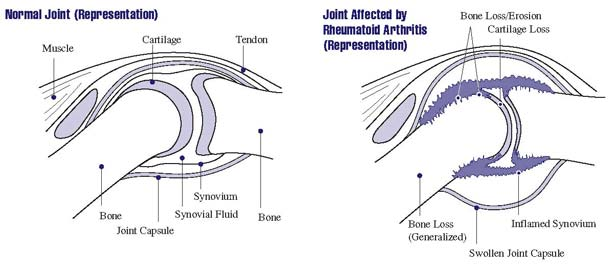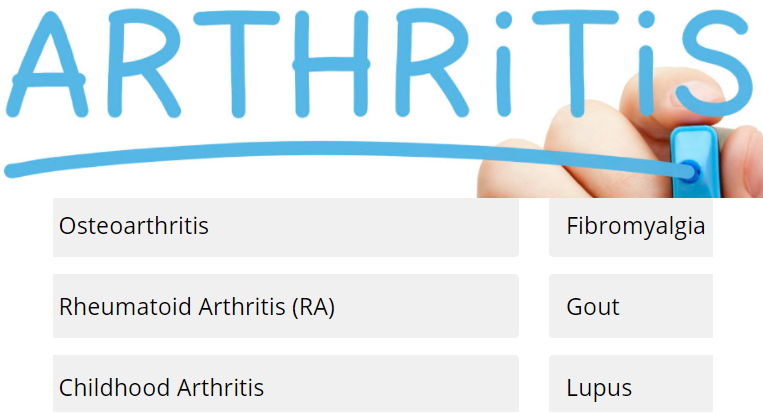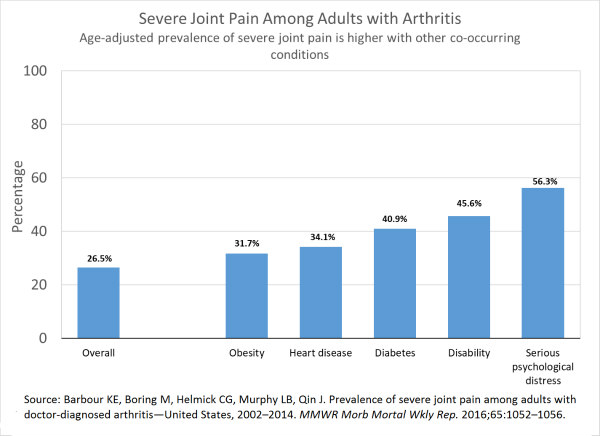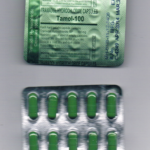About 1 in 4 adults in the United States have arthritis, a leading cause of disability. Healthy People 2030 focuses on reducing pain, disability, and limitations from arthritis — especially as it becomes more common in the aging population.
Many adults with arthritis have severe pain. Nearly half of people with arthritis have trouble doing daily activities, and the condition can limit the ability to work. Strategies to help adults manage their arthritis, like interventions to increase physical activity, may help address activity limitations by reducing pain and disability.
Adults with arthritis are also more likely to have other chronic conditions, like diabetes, heart disease, and obesity. Encouraging adults to manage arthritis may help improve their other health problems and overall health.
What is Arthritis ?
“Arthritis” literally means joint inflammation. Although joint inflammation is a symptom or sign rather than a specific diagnosis, the term arthritis is often used to refer to any disorder that affects the joints. Joints are places where two bones meet, such as your elbow or knee. Arthritis means inflammation or swelling of one or more joints. It describes more than 100 conditions that affect the joints, tissues around the joint, and other connective tissues. Specific symptoms vary depending on the type of arthritis, but usually include joint pain and stiffness.
The term “arthritis” describes more than 100 diseases and conditions affecting joints, the surrounding tissues, and other connective tissues, such as tendons and ligaments. Symptoms of arthritis typically include pain, swelling, stiffness and aching in and around the joint. Arthritis can develop suddenly or gradually over time.
Arthritis and other chronic conditions
Arthritis commonly occurs with obesity, heart disease and diabetes and can cause complications in the management of other chronic diseases. Arthritis-related joint pain and mobility
limitations may be a barrier to adopting healthy behaviors, such as engaging in physical activity, for fear of causing further joint pain or damage.
There are different types of arthritis. In some diseases in which arthritis occurs, other organs, such as your eyes, heart, or skin, can also be affected. Fortunately, current treatments allow most people with arthritis to lead active and productive lives.

If you feel pain and stiffness in your body or have trouble moving around, you might have arthritis. Most kinds of arthritis cause pain and swelling in your joints. Joints are places where two bones meet, such as your elbow or knee. Over time, a swollen joint can become severely damaged. Some kinds of arthritis can also cause problems in your organs, such as your eyes or skin.
Types of arthritis include
- Osteoarthritis is the most common type of arthritis. It’s often related to aging or to an injury.
- Autoimmune arthritis happens when your body’s immune system attacks healthy cells in your body by mistake. Rheumatoid arthritis is the most common form of this kind of arthritis.
- Juvenile arthritis is a type of arthritis that happens in children.
- Infectious arthritis is an infection that has spread from another part of the body to the joint.
- Psoriatic arthritis affects people with psoriasis.
- Gout is a painful type of arthritis that happens when too much uric acid builds up in the body. It often starts in the big toe.
What are the types of arthritis?
There are several types of arthritis. Common ones include:
- Ankylosing Spondylitis is arthritis that affects the spine. It often involves redness, heat, swelling, and pain in the spine or in the joint where the bottom of the spine joins the pelvic bone.
- Gout is caused by crystals that build up in the joints. It usually affects the big toe, but many other joints may be affected.
- Juvenile Arthritis is the term used to describe arthritis in children. Arthritis is caused by inflammation of the joints.
- Osteoarthritis usually comes with age and most often affects the fingers, knees, and hips. Sometimes osteoarthritis follows a joint injury. For example, you might have badly injured your knee when young and develop arthritis in your knee joint years later.
- Psoriatic Arthritis can occur in people who have psoriasis (scaly red and white skin patches). It affects the skin, joints, and areas where tissues attach to bone.
- Reactive Arthritis is pain or swelling in a joint that is caused by an infection in your body. You may also have red, swollen eyes and a swollen urinary tract.
- Rheumatoid arthritis happens when the body’s own defense system doesn’t work properly. It affects joints and bones (often of the hands and feet), and may also affect internal organs and systems. You may feel sick or tired, and you may have a fever.
Arthritis is seen with other conditions. These include:
- Lupus happens when the body’s defense system harms the joints, heart, skin, kidneys, and other organs.
- Infection that gets into a joint and destroys the cushion between the bones.

What are the symptoms of arthritis?
Symptoms of arthritis can include:
- Pain, redness, heat, and swelling in your joints.
- Trouble moving around.
- Fever.
- Weight loss.
- Breathing problems.
- Rash or itch.
These symptoms may also be signs of other illnesses.
What causes arthritis?
There are probably many genes that make people more likely to have arthritis. Research has found some of these genes. If you have the gene linked with arthritis, something in your environment—such as a virus or injury—may trigger the condition.
Is there a test for arthritis?
To diagnosis you with arthritis or another rheumatic disease, your doctor may:
- Ask you about your medical history.
- Give you a physical exam.
- Take samples for a laboratory test.
- Take x-rays.
How is arthritis treated?
There are many treatments that can help relieve pain and help you live with arthritis. You should talk to your doctor about the best treatments for you, which can include:
- Medications to relieve pain, slow the condition, and prevent further damage.
- Surgery to repair joint damage or relieve pain.
Who treats arthritis?
Doctors who diagnose and treat arthritis and other rheumatic diseases include:
- A general practitioner, such as your family doctor.
- A rheumatologist, who treats arthritis and other diseases of the bones, joints, and muscles.
Living with arthritis
There are many things you can do to help you live with arthritis and other rheumatic diseases, including:
- Take your medications when and how you’re supposed to.
- Exercise to reduce joint pain and stiffness. It also helps with losing weight, which reduces stress on the joints. You should speak to your doctor about a safe, well-rounded exercise program.
- Use heat and cold therapies to reduce joint pain and swelling.
- Try relaxation therapy to help reduce pain by learning ways to relax your muscles.
- Use splints and braces to support weakened joints or allow them to rest. You should see your doctor to make sure your splint or brace fits well.
- Use assistive devices, such as a cane or shoe insert, to ease pain when walking. Other devices can help you open a jar, close zippers, or hold pencils.
The most common complaint of those suffering with arthritis is pain. The management of arthritis pain is a multi-billion dollar business and as the US population ages, the costs will continue to rise. In the United States alone, arthritis results in roughly $ 50 billion in lost wages and $ 50 billion in health care costs.
Arthritis results in more than 1 million hospitalizations annually and fully 45 million visits to outpatient health care centers and clinics.
Some types of arthritis can be prevented, such as gout and secondary osteoarthritis. These can be prevented, to a great extent, through proper diet and exercise. The principal cause of these types of arthritis is our old enemy, obesity.
The US is facing the perfect storm in terms of new arthritis cases. We have an aging population coupled with a rising incidence of obesity. This combination is sure to foment an unprecedented number of arthritis sufferers in the years ahead.
Severe Joint Pain Among Adults With Arthritis
Arthritis-related severe joint pain affects adults of all ages, both sexes, and all races and ethnicities. Most of what we know about severe joint pain is for adults. The age-standardized prevalence of severe joint pain among adults with arthritis varies by state, ranging from 20% in Utah to 46% in Mississippi.1
From 2002 to 2014 in the United States, severe joint pain prevalence among adults with arthritis was:
- Higher among women (29.2%) than men (22.7%).
- Highest among adults aged 45 to 64 years (30.7%). Prevalence was the same for adults aged 18 to 44 years (24.9%) and adults aged 65 years or older (24.3%).
- Highest among non-Hispanic Blacks (42.3%), followed by Hispanics (35.8%), and non-Hispanic whites (23.1%).

- Severe joint pain is more common among adults with arthritis who also have other chronic conditions including diabetes (40.9%), heart disease (34.1%), and obesity (31.7%), and among adults with a disability (45.6%).
- More than half (56.3%) of adults with arthritis and serious psychological distress reported having severe joint pain.
Arthritis and Joint Pain Management
Many professional organizations have guidelines for managing arthritis pain. A common theme across guidelines is that pain management strategies should be flexible, include options that do not involve medication, and be tailored to meet the needs of the patient. Such guidelines suggest the following for managing arthritis symptoms such as pain:
- Over-the-counter medications like acetaminophen (e.g., Tylenol®) or ibuprofen (e.g., Advil® or Motrin®) and other nonsteroidal anti-inflammatory drugs (NSAIDs).
- Physical activity/exercise or community-based physical activity programs.
- Exercise therapy, including physical therapy.
- Self-management education workshops.
- Weight loss, if overweight or obese.
- Cognitive behavioral therapy—a psychological, goal-directed approach in which patients learn how to modify physical, behavioral, and emotional triggers of pain and stress.
Arthritis Pain Management without Medications
There are multiple ways for adults with arthritis to reduce their pain without using medications. In particular, CDC recommends evidence-based physical activity and self-management education programs that are proven to improve the quality of life of people with arthritis.
Physical Activity
- Regular physical activity can help relieve adult arthritis pain as effectively as over-the counter medications.
- Physical activity has many additional benefits, including improved physical function and mood and reduced anxiety.
- Walking, biking, swimming, and other water activities (e.g., water aerobics, aqua jogging) are all effective ways to ease arthritis pain and are safe for most adults.
- Scientific studies have shown that regular, moderate physical activity can reduce pain and improve function, mood, and quality of life for adults with arthritis.
- Physical activity can also help with the management of other chronic conditions that are common among adults with arthritis, such as diabetes, heart disease, and obesity.
- National guidelines recommend that adults get at least 150 minutes of moderate intensity activity a week, or 30 minutes per day, five days a week.
- The CDC Arthritis Program recommends four community-based physical activity interventions, taught by trained instructors and proven to improve quality of life for people with arthritis:
1) Active Living Every Day, 2) Fit and Strong!, 3)Enhance Fitness and 4) Walk with Ease.11 - Despite the proven benefits of physical activity, NYS adults with arthritis are more likely to report physical inactivity (31.2%) as compared to those without arthritis (21.6%).
Pain Medications, Pain Relief, and Pain Management









I never knew that arthritis is a condition that makes your joints feel pain if they get under stress. My uncle is wondering why his knees are aching each time he’s doing the usual farm tasks that he’s supposed to do. Maybe it’s time that he consider visiting an arthritis center that could diagnose twhy this is happening. https://www.arthritiscenters.net/rheumatoid